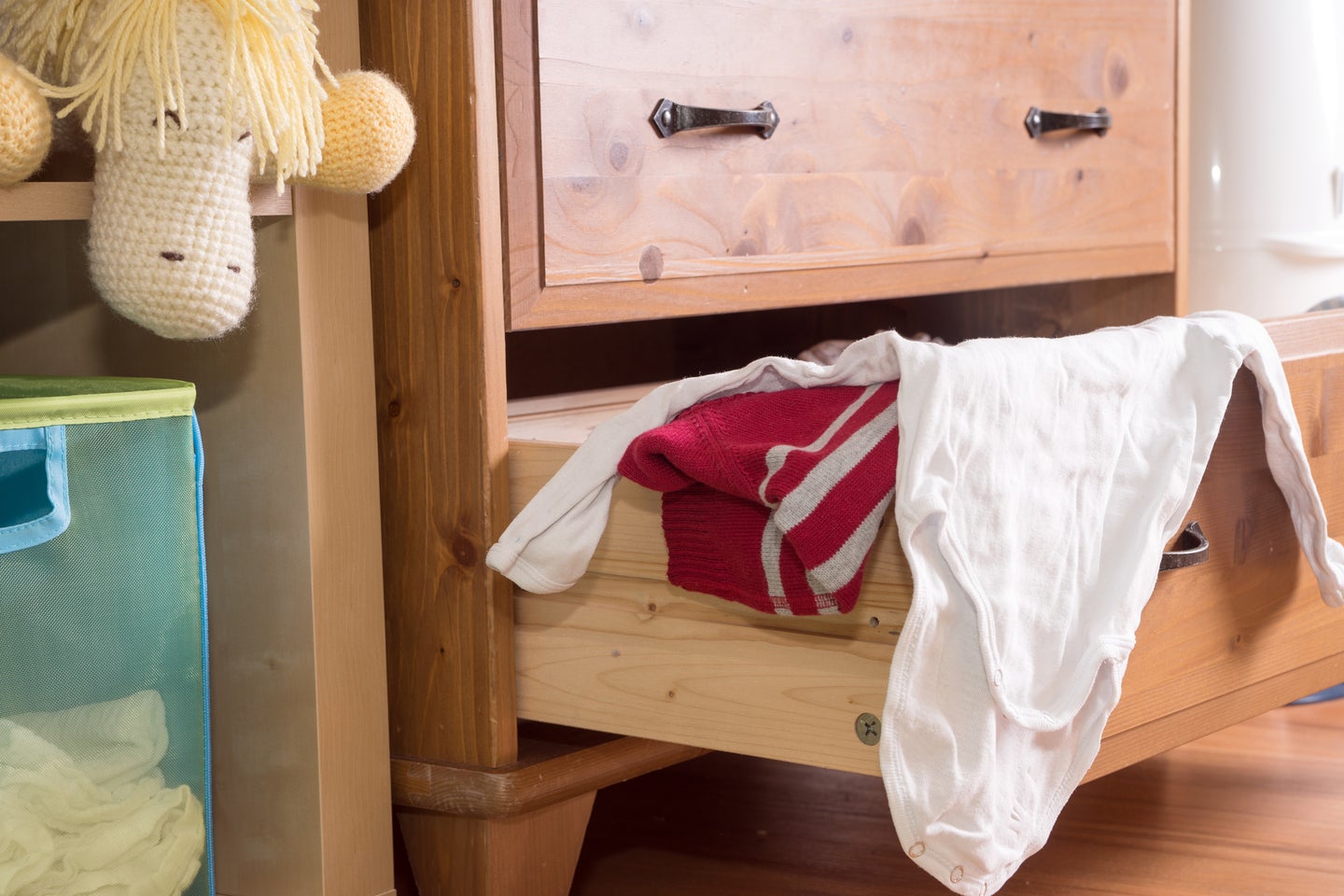Even short dressers can crush kids, so anchor them to the wall
Regulations don’t govern furniture under 30 inches, but a new Consumer Reports investigation shows they’re still deadly.

Among the litany of screws and plastic doo-hickeys remaining after you assemble tall IKEA furniture, you may have noticed a separate plastic bag containing brackets. These, you read in the instructions, are wall anchors, and you absolutely must attach them to your new furniture lest you unintentionally kill someone when your botched HEMNES tips over. You probably threw the hardware away or stuffed it into some cluttered odds-and-ends drawer.
Had you assembled a shorter item, specifically one 30 inches tall or under, you wouldn’t have seen this extra baggie. Dressers that short have been deemed unlikely to tip. But a new Consumer Reports investigation suggests that not only should you have used those wall anchors for your taller stuff, but you should also have purchased extra anchors for short items as well.
Their report shows that even short dressers have killed children in recent years and argues that the safety standards simply aren’t up to snuff. Of the 17 sub-30-inch dressers they tested, half couldn’t support a 50-pound weight hanging off the front of an extended drawer (the industry standard for taller dressers), which simulates the weight of a child clambering up furniture. Another three items could support 50 but not 60 pounds, while just five passed with flying colors.
The central problem here is one of balance. When someone pulls a dresser drawer open, the report explains, the furniture’s center of gravity shifts outward along with it. A weight hung on an open drawer versus one hung on a closed drawer could have significantly different effects—the open drawers make it much more likely to tip. All dressers should be designed to not fall over, but the safety standards are entirely voluntary. Companies decide whether or not to adhere to the guidelines, though even manufacturers that do adhere don’t have to test any dresser 30 inches or less in height. But that cutoff is fairly arbitrary.
“The cutoff was driven by other furniture, such as nightstands, which helped define what clothing dressers are,” explains James Dickerson, Chief Scientific Officer at Consumer Reports. According to their investigation, though, at least five kids have died when exempt dressers measuring 30 inches or below fell over. The report drives this point home with the story of Charlie Horn, a toddler who died when his short clothes dresser tipped over. His parents had no idea that the furniture was hazardous.

Deaths like Charlie’s prompted the Consumer Product Safety Commission to start their “Anchor It” campaign in the last few years, to try to spread the word to parents that their kids could be at risk. By their estimation, 28,300 people sustained injuries from falling furniture between 2015 and 2017. There have also been 542 deaths from 2000 to 2017, 100 of which were from dressers, chests, or bureaus. Kids, being small and more likely to want to climb up onto a drawer, are the most vulnerable to such accidents.
How do I know if my furniture is safe for kids?
Check the CPSC listings and you’ll find popular manufacturers like IKEA and Target have had to issue recalls in recent years due to their products tipping over during normal use. (This is, incidentally, why you should register your products—you’ll get an email if something gets recalled).
But Consumer Reports notes that the CPSC isn’t necessarily doing all it can to save children’s lives. They were supposed to issue a ruling earlier this year intended to reevaluate the safety standards for dressers. Instead, they’ve decided to continue collecting data and monitoring the issue.
Given that their research shows even short furniture can be deadly, Consumer Reports is calling for increased standards.
“What we found over the course of many months is that manufacturers could make dressers stable enough to pass a more rigorous test,” says Dickerson, “and the current voluntary standard does not cover enough dressers, does not protect enough children, and is not mandatory.”
In the meantime, concerned parents can do a few things to keep their kids safe. One is to check out the Consumer Reports results to see if you happen to own one of the dressers they tested. The other is to fish those furniture anchors out of the odds-and-ends drawer (or go buy new ones) and secure your dressers to the wall. Yes, it will be a pain to have a hole in your wall if you ever want to swap the furniture out, but it’s not so different from hanging a picture frame. And, though TVs weren’t mentioned in this particular report, you should also secure your television to the wall—30 percent of injuries and 34 percent of fatalities related to tip-overs are from TVs alone. You can also search the CPSC recall site to see whether items you own have been recalled due to safety issues.
Hopefully, in the future, every dresser will be designed to resist tipping. But right now it’s on parents to make their homes safe. As Dickerson notes, “furniture tip-overs are a preventable safety epidemic.“ It’s scary to think about, but simple to solve: get out a drill and fix that furniture to the wall.